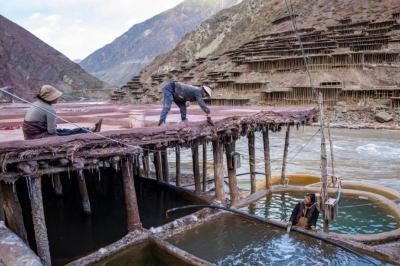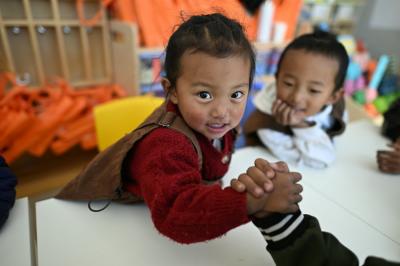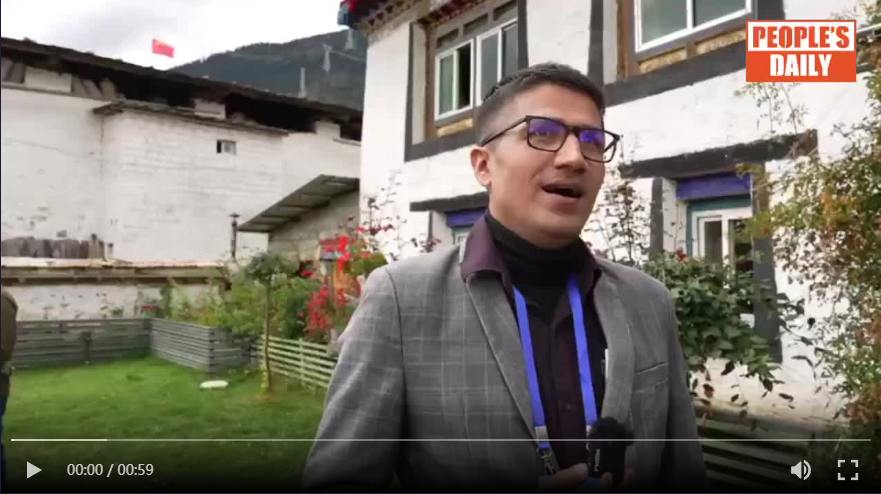| Aug.27,2018--The 11th Panchen Lama Erdeni Choskyi Gyalpo , who is currently in Lhoka, Tibet, visited orphaned children at the Lhoka Special Education School and Children’s Welfare Institute.
The children here are either orphans or have some physical defects, but their “imperfections” have not affected their ability to study or live happily. Seeing their sunny smiles, those present were all moved.
Established in August 2013, the Lhoka Special Education School adopts a combination of medical care and education, specializing in early intervention and treatment for disabled children. Facilities in the school include a sensory training room, a speech and hearing rehabilitation training room, and a blind massage room. The Lhoka Children’s Welfare Institute has provided indoor and outdoor activity rooms including multimedia education rooms, a library, an art room, a growth education park, a dance studio, and a Tibetan calligraphy room for more than 460 children.
All through the school, the Panchen Lama either smiled with the children, asking them how they were,checking on their studies, or asked a teacher about certain details. After visiting the rehabilitation area, the Panchen Lama went to the learning area, student life area, and disabled vocational education center to understand the vocational skills and growth of children with disabilities.
“Do you like this job?” “Are you willing to do this job?” While visiting the rehabilitation area, the 11th Panchen Lama carefully asked the teachers about their work and told them, “You are here to contribute to these disabled children. It is really great work, and I salute you.”
The two new species named "Xiyunykus pengi" and "Bannykus wulatensis" are bird-like dinosaurs known as alvarezsaurs that share many characteristics with birds.
The bodies of alvarezsaurs are slender, with a bird-like skull and many small teeth instead of the usual large, sharp cutting teeth of their meat-eating relatives, according to the study.
"When we described the first well-known alvarezsaur, Mononykus, in 1993, we were amazed at the contrast between its mole-like arms and its roadrunner-like body, but there were few fossils connecting it back to other theropod groups," said James Clark, professor of biology at the George Washington University.
The alvarezsaurs did not always look this way, however, according to the researchers.
Early members of the group had relatively long arms with strong-clawed hands and typical meat-eating teeth. Over time, they evolved into dinosaurs with mole-like arms and a single claw.
The discovery of the new specimens lent clue to an important shift in how the specialized features of the alvarezsaurs evolved.
"It can be hard to pin down the relationships of highly specialized animals. But fossil species with transitional features, like Xiyunykus and Bannykus, are tremendously helpful because they link bizarre anatomical features to more typical ones," said Jonah Choiniere, an associate professor at Wits University and member of the research team.
"Our international field teams have been tremendously productive over the years," said Xu Xing from the Institute of Vertebrate Paleontology and Paleoanthropology at the Chinese Academy of Sciences. "This research showcases just some of our incredible discoveries."
|
- Home
- News Tibet |Exclusive |China |World |Related News |Latest
- Documents White Papers |Others
- Photo Politics |Economy & Society |Culture & Religion |Human & Nature |Beautiful Tibet |Other Tibetan-Inhabited Area |Exchanges |Related
- Video News |Documentary |Micro-Video |Entertainment
- Art
- Tourism
- In Focus
- About Tibet






